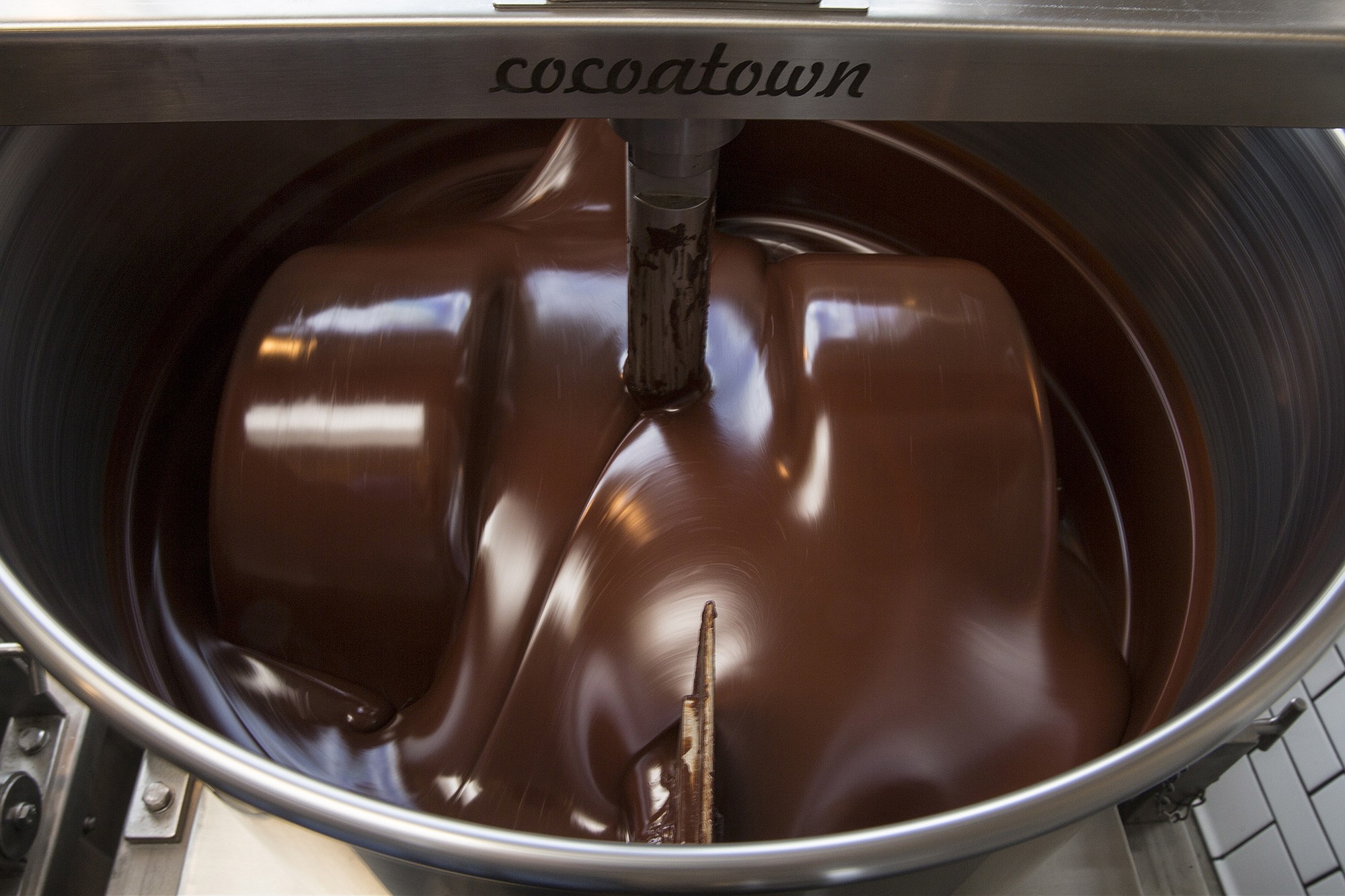REDLANDS, Calif. — Ryan Berk makes his chocolate from scratch. That means flying to Central America four times a year, hiking over Maya ruins to remote jungle villages and meeting face-to-face with the farmers who supply his cocoa beans.
Roasted back home at Berk’s shop, the beans have a habit of enveloping downtown Redlands with a warm smell like brownies fresh from the oven. It’s only then that the chocolate maker with the Indiana Jones streak can mix and shape the ancient treat into bars, carefully wrapping each one by hand.
By trading directly with farmers, artisan producers such as Berk believe they can ensure fair prices and preserve a source of unique flavors that largely don’t exist in a business dominated by Wall Street traders and a handful of multinational candy giants.
“It’s a way for us to all profit,” said the 31-year-old former chef who opened his shop, Parliament Chocolate, a year ago. “We need the farmers as much as the farmers need us.”
Berk’s style of chocolate is known in the business as bean-to-bar, and its focus on pure but bold flavors is drawing fans the same way craft beer and artisanal coffee already have. It comes at a time when the larger chocolate industry continues to grapple with overseas child labor, a potential shortage of cocoa and rising prices for both the industry and consumers.
The number of chocolate makers in the United States who identify with the bean-to-bar movement — by either sourcing cocoa directly from farmers or buying it from specialty importers — has grown tenfold in the last decade to at least 60, according to the Fine Chocolate Industry Association.
Though small, that’s still dozens more than in Europe, which has been enjoying the delicacy since the days of Christopher Columbus. It also doesn’t include people buying beans and creating exotic chocolate in home kitchens.
“This whole thing started with the idea we could go back to the 1700s and make chocolate on a small scale like they were making it before the Industrial Revolution,” said Pam Williams, president of the Las Vegas-based Fine Chocolate Industry Association. “There is the desire to know where your food comes from and a reaction against mass-produced food in general that’s translating over into chocolate.”
Though bean-to-bar was a tiny part of the nation’s $17.7 billion in chocolate sales last year, Williams says interest has grown exponentially in recent years. That has come, she says, as access to premium cocoa in smaller quantities has allowed small entrepreneurs to enter the market.
The modern-day movement traces its origins to 1997 when the late Robert Steinberg, a physician, teamed with winemaker John Scharffenberger to create one of the most successful bean-to-bar brands: Scharffen Berger Chocolate Maker in San Francisco.
The company was sold to Hershey Co. in 2005, demonstrating the financial viability of the niche product. Similar high-end chocolates are now available in myriad specialty stores and supermarkets such as Whole Foods.
Though Berk also makes truffles and bonbons, his main product is plain dark chocolate hailing from a single origin such as Bolivia, the Dominican Republic or Guatemala. That allows him to showcase the region’s flavor — be it berries, tropical fruit or even mushrooms.



